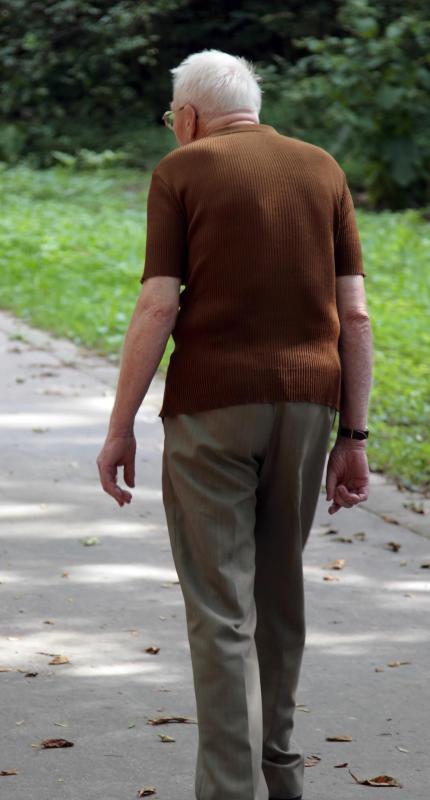At TheHealthBoard, we're committed to delivering accurate, trustworthy information. Our expert-authored content is rigorously fact-checked and sourced from credible authorities. Discover how we uphold the highest standards in providing you with reliable knowledge.
What is the Most Common Osteoporosis Pathophysiology?
Pathophysiology is a term which describes the changes that occur when normal biological processes become abnormal. Osteoporosis pathophysiology, therefore, refers to the changes that occur in the body as a result of osteoporosis. People with this condition suffer from a number of symptoms relating to loss of bone density, often as a result of long-term calcium deficiency.
Osteoporosis itself has few specific symptoms which can be recognized in people with the disease, one of which is more brittle bones. This condition results in a greatly increased risk of bone fractures as a result of falls and other injuries. Fractures related to osteoporosis tend to occur in bones which would not normally be vulnerable to damage from a simple fall. These include wrist bones, hips, ribs, and bones in the vertebral column.

The principle cause of osteoporosis pathophysiology is an imbalance between two factors relating to maintenance of bone density. These factors are bone formation and bone resorption. Normal healthy bone is constantly being repaired and remodeled; some estimates indicate that up to ten percent of bone tissue is undergoing this process in a healthy body.

Bone formation is a process in which bone matter is deposited by cells called osteoblasts. Bone resorption is the opposite process: cells called osteoclasts absorb bone matter. These two processes must stay in perfect balance for maintenance of healthy levels of bone density. In someone with osteoporosis, bone formation and bone resorption are unbalanced, causing bone to become less dense, more brittle, and more prone to fracture.

Several different factors may lead to an imbalance between bone deposition and resorption. One of the most common is the reduction in estrogen levels which occurs in post-menopausal women. This reduction causes the bone resorption rate to increase relative to the bone formation rate.
Another common mechanism of osteoporosis pathophysiology is calcium deficiency. Bone matter is continually being deposited and reabsorbed in part to provide the body with the supply of calcium it needs for essential tasks such as muscle contraction and neurotransmission. Reabsorbed bone releases calcium, which enters the bloodstream and is distributed to cells which require it. When calcium is not provided by the diet, more of the mineral must be retained from the bones, and this process reduces the rate at which bone matter is deposited by osteoblasts. This deficiency can be exacerbated by lack of vitamin D.

Other organs, including the thyroid and parathyroid glands, secrete hormones which may play a role in osteoporosis pathophysiology. The thyroid gland secretes a hormone called calcitonin, which increases the rate of bone deposition by osteoblasts. The parathyroid glands secrete parathyroid hormone, which has many roles, including that of increasing the rate at which bone matter is reabsorbed. An imbalance in the levels of either of these two hormones may be important in the development of osteoporosis pathophysiology.
AS FEATURED ON:
AS FEATURED ON:


















Discussion Comments
Another potential cause of osteoporosis is long-term use of steroids like prednisone. I had to have an osteoporosis bone scan after receiving prednisone for a couple of years for an arthritis. If you have a condition treated by this drug, your osteoporosis risk is increased.
Post your comments